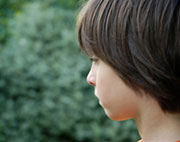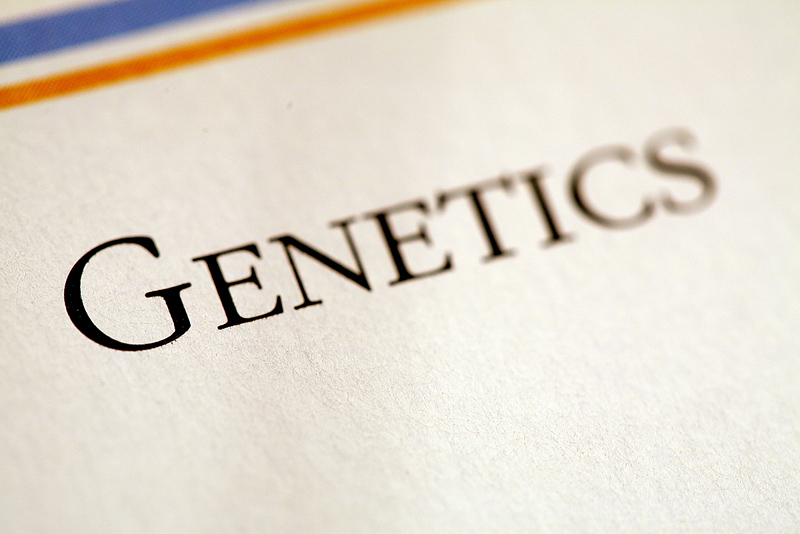
THURSDAY, Feb. 27, 2014 (HealthDay News) — A new DNA study begins to explain why girls are less likely than boys to have an autism spectrum disorder.
It turns out that girls tend not to develop autism when only mild genetic abnormalities exist, the researchers said. But when they are diagnosed with the disorder, they are more likely to have more extreme genetic mutations than boys who show the same symptoms.
“Girls tolerate neurodevelopmental mutations more than boys do. This is really what the study shows,” said study author Sebastien Jacquemont, an assistant professor of genetic medicine at the University Hospital of Lausanne, in Switzerland.
“To push a girl over the threshold for autism or any of these neurodevelopmental disorders, it takes more of these mutations,” Jacquemont added. “It’s about resilience to genetic insult.”
The dilemma is that the researchers don’t really know why this is so. “It’s more of an observation at a molecular level,” Jacquemont noted.
In the study, the Swiss researchers collaborated with scientists from the University of Washington School of Medicine to analyze about 16,000 DNA samples and sequencing data sets from people with neurodevelopmental disorders, including autism spectrum disorders.
The investigators also analyzed genetic data from almost 800 families affected by autism for the study, which was released online Feb. 27 in the American Journal of Human Genetics.
The researchers analyzed copy-number variants (CNVs), which are individual variations in the number of copies of a particular gene. They also looked at single-nucleotide variants (SNVs), which are DNA sequence variations affecting a single nucleotide. Nucleotides are the basic building blocks of DNA.
The study found that females diagnosed with any neurodevelopmental disorder, including attention-deficit/hyperactivity disorder and intellectual disability, had more harmful CNVs than males who were diagnosed with the same disorder. Females with autism also had more harmful SNVs than males with the condition.
“There’s a well-known disparity when it comes to developmental disorders between boys and girls, and it’s been puzzling,” Jacquemont said. “And there have been quite a bit of papers trying to investigate this bias that we’ve seen in the clinic.”
The study authors pointed out that autism affects four boys for every one girl. The ratio increases to seven-to-one when looking at high-functioning autism cases.
It’s an interesting study, said Dr. Andrew Adesman, chief of developmental and behavioral pediatrics at the Steven & Alexandra Cohen Children’s Medical Center of New York.
“It’s not an easy study to read, but certainly the take-away suggests it tries to lend further support to the assumption that the ratio of males to females [who have autism] is affected by genetic vulnerabilities — that it has a genetic underpinning,” Adesman said.
What do the findings mean for parents and patients?
Adesman said there are no immediate benefits, but the knowledge can help direct future research.
“This isn’t going to lead to a breakthrough in treatment, but from a clinical standpoint it may help researchers and academics understand why it is that developmental disorders seem to be more common in boys than girls,” he noted.
The new research also reinforces that genetic differences — or vulnerabilities — aren’t limited to sex chromosomes, Adesman added.
“The presumption has been, ‘Well gee, boys have a Y chromosome and girls don’t, so are there problems with the Y chromosome that explain it?'” Adesman noted.
“The bottom line is that there are a lot of different genetic abnormalities and atypicalities that result in developmental disorders in children and adults,” Adesman explained. “Women seem to be a little more resilient in terms of being able to have minor abnormalities without having a developmental problem.”
Jacquemont agreed that the team’s discovery opens the door for new avenues of study.
The findings provide ideas “for deciphering the issue further,” said Jacquemont. “One study that might be helpful would be trying to understand what are the symptoms that appear a lot faster in males than females. There are a lot of alleys that could be explored.”
More information
The U.S. National Institute of Neurological Disorders and Stroke has more about autism.
Copyright © 2025 HealthDay. All rights reserved.

